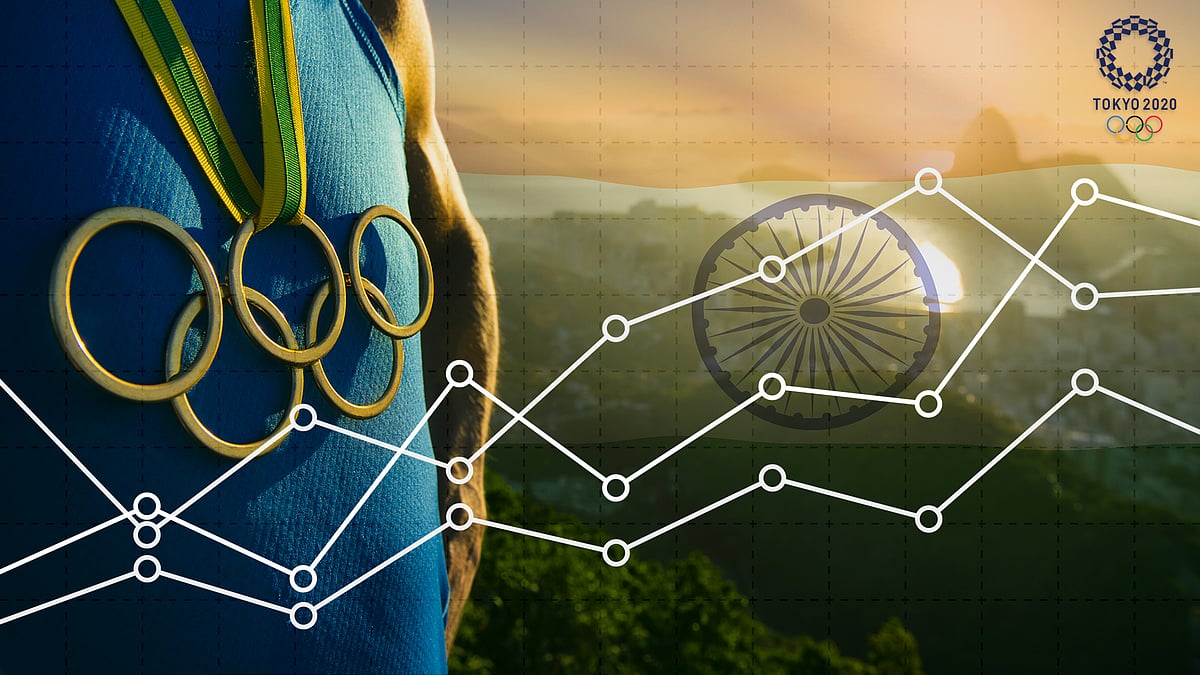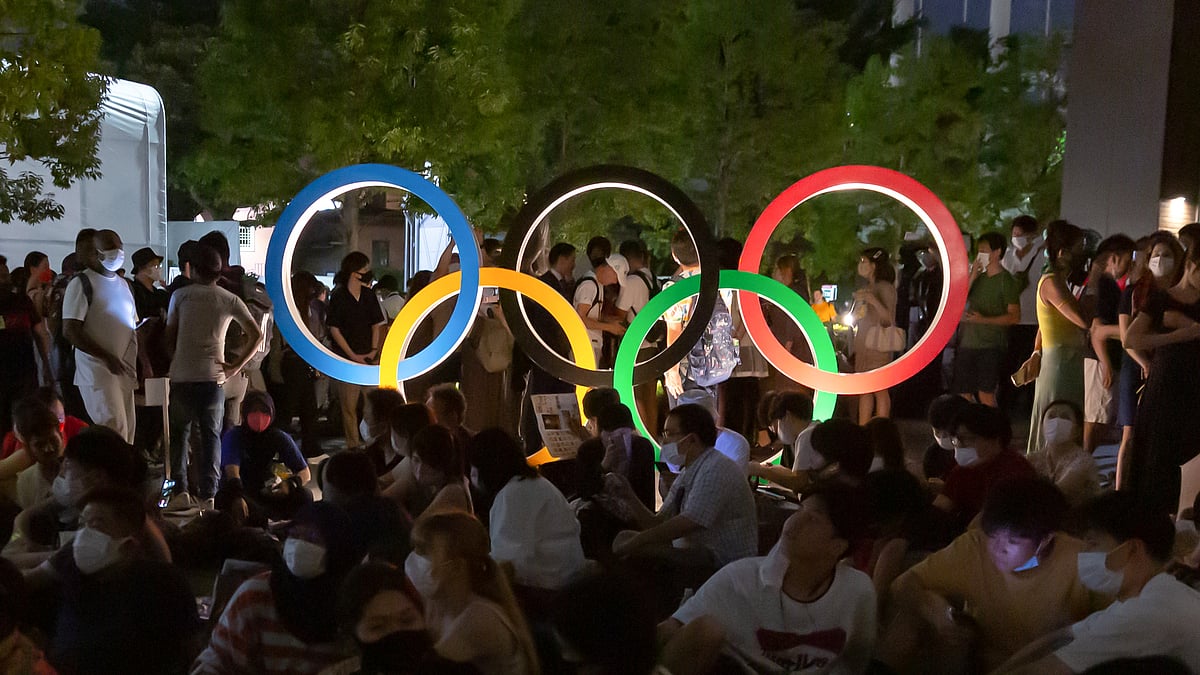In slaying India's self-doubt, Neeraj Chopra's win is a step towards a future leap
The promising platform of Tokyo will need sustained public focus and support to give wings to India’s ambitions at Paris 2024.
At 23, Neeraj Chopra is a legend. An Olympic gold does that; it leaves no scope for rival claims. Instead, it settles all claims.
Chopra was unsurpassed by the more fancied German and Czech javelin throwers, aiming for glory at an event that even figured in the Olympics of ancient Greece. On a muggy evening in Tokyo, his second throw of 87.58 metres was enough to go unrivalled. By all measures of global sporting achievements, he is now the best in what he does.
The scale of achievement acquired an edifying ring as the live images were beamed to millions of TV screens and mobile screens across India. Its moral glow came from banishing more than a century of self-doubt that India had in track and field events on the global stage. In putting an end to the 121-year wait for the athletics honour at the Olympics, Neeraj ensured that self-loathing anxieties about “inherent limitations” caging India’s athletic flight at the Olympics can’t have an untrammeled run. It’s a point of departure from a long period. So, while ushering in the beginning, the young man from Haryana also saw that an era ended with, as Arthur Miller would have said, its “basic illusions” extended.
This sense of history did not skip Neeraj’s mindspace. He dedicated the medal to Milkha Singh, the sprinter who missed by a whisker a medal at 1962 Rome Olympics. The spectre of a narrow miss haunted PT Usha again in the 1984 Los Angeles Olympics. Neeraj’s gold-clinching throw had a cathartic path to travel across this arch of agony. The annals of India’s track and field story didn’t need any addition to “so near yet so far” subtexts. Neeraj’s win ensured that chroniclers turned a page.
 Numbers game: Who has India sent to Tokyo Olympics?
Numbers game: Who has India sent to Tokyo Olympics? What’s the Tokyo Olympics story Indian media should be telling?
What’s the Tokyo Olympics story Indian media should be telling?Significantly, Neeraj’s gold came almost an hour after Bajrang Punia bagged a bronze in the 65 kg freestyle wrestling. The two medals on the penultimate day of the Olympics meant that India finished with seven medals – one gold, two silver, and four bronze – which is also the country’s highest haul at the Olympics. India was ranked 48th in the medal table and 33rd in terms of overall medals won. The 48th position is also a 40-year high, considering that India was placed 23rd in the 1980 Moscow games.
However, the 1980 Olympics can’t be taken as a measure because the Olympics scene has changed a lot in the last four decades. A number of new countries are now participating and many new games and events have been included. With a single gold in men’s hockey in 1984 and nothing else, India could break into the top 25. Today taking the two different scenarios into account, an estimate says that the 1980 performance could have only earned India a joint 63rd position in Tokyo. In the last three Olympics at Beijing (2008), London (2012) and Rio (2016), India ranked at 51, 57 and 66, respectively.
Given India’s size and population, the mismatch of its untapped potential and its place in the overall tally is obvious but not when seen against a past of despair, even indifference. For much of the twentieth century, India pinned its medal hopes on its dominance in hockey alone, with occasional flashes in the pan like a wrestling bronze in the 1952 Helsinki Olympics or a tennis bronze in the 1996 Atlanta Olympics.
Even if the hopes from hockey receded to indifference by the turn of the new century, India’s quest for Olympic glory saw it foraying into disciplines like weightlifting (2000 bronze at Sydney), shooting (2004 silver at Athens, gold at Beijing) and, of course, wrestling (2008 bronze at Beijing, 2012 silver at London, 2016 bronze at Rio). Tokyo 2020 saw India represented by 127 participants in 18 different disciplines.
It wasn’t only the largest contingent that India sent to any Olympics but even the variety of disciplines showed diversity. The configuration of the seven medals won also reflects this: one in javelin throw, two in wrestling, one in weightlifting, one in boxing, one in badminton, and one in hockey. The men’s hockey team’s journey towards securing a bronze, and the women’s team’s near miss, seems to have reversed the hiatus that threatened to make Indian hockey’s glorious past in the Olympics a relic of nostalgia, even a candidate for public oblivion. The two medals in wrestling did keep the promise of Indian wrestling afloat, though it fell short of the expectations held by avid watchers of India’s wrestling scene.
Beyond the visible feat of the medal wins, even some impressive and determined strides didn’t go unnoticed. It ranged from Bhavani Devi’s foray into the uncharted zone of fencing to Aditi Ashok’s narrow miss of a golf medal to even veteran Mary Kom punching for her share of parting glory in the Olympic ring. More significantly, a large section of Indians were keen on learning the basics or even nuances of more competitive sports and events. They were ready to look beyond the cold numbers of a win-loss binary and the scale of response showed that they were interested in the process as well. It translated into an effort-tinged lens to look at some of the valiant performances. In some ways, it altered how India engages with the Olympics, and also showed how people across India were looking at a number of non-cricketing sports as “vehicles of aspiration”, as social commentator Santosh Desai put it.
The visible positives aside, the wide gap again visible between India and sporting powerhouses like China, the United States, Japan, Germany, Australia and the United Kingdom show that much distance needs to be covered before breaking into the big league. The lack of funding, infrastructural push, and training facilities have made many see the few sparks of Olympic glory as being achieved against the odds of public apathy. To an extent, this has changed with some focused programmes and federations keeping greater latitude to the promising contenders to plan their coaching modes.
However, that’s too little, seen in the face of an estimate which says that China spends (in Indian currency terms) Rs 6.10 per day per capita on sports while Indian spending is limited to three paise per day per capita. It’s not just China eager to stamp dominance in international sports but also old world powers like the UK which have put massive funds into their sports programmes. For India, besides a bigger push from the government, exploration of robust PPP models can also be effective. Neeraj Chopra, for instance, benefitted as much from support from the Athletics Federation of India and the army, his employer, as he did from support from the private sector JSW group for his training in Europe.
In giving a different spring to the steps of millions of Indians on a glorious Saturday evening for Indian sports, Neeraj Chopra achieved greatness in the prime of his youth. Before this, other members of the Indian contingent at Tokyo had done enough to make it India’s most confident and rewarding Olympic effort. However, the promising platform of Tokyo will need sustained public focus and support to give wings to India’s ambitions at Paris 2024, and Los Angeles. A lot has to work in tandem if India wants to build on the little advances and leap towards the big league of Olympic glory.
Update: A previous version of this story incorrectly referred to Aditi Ashok as Aditi Devi. This has been corrected. The error is regretted.
